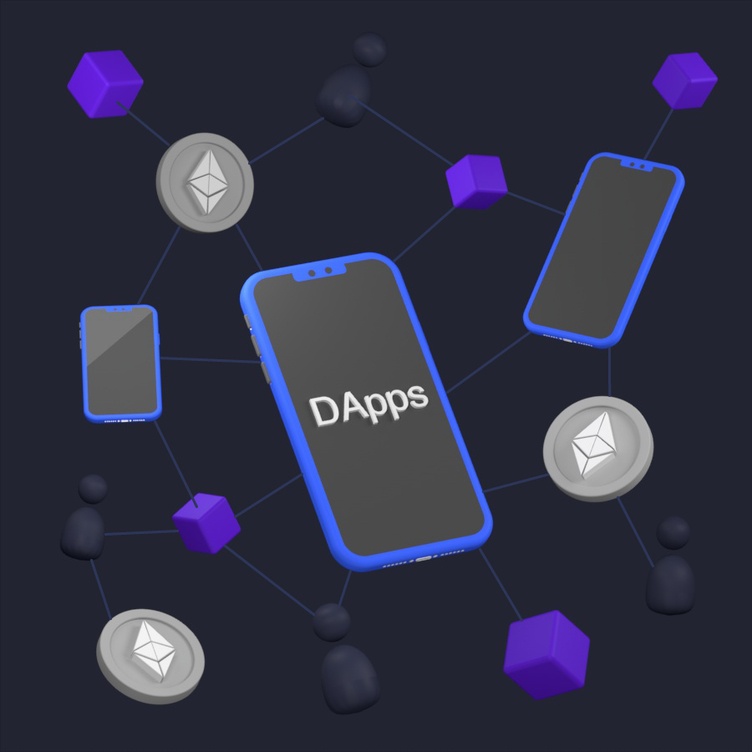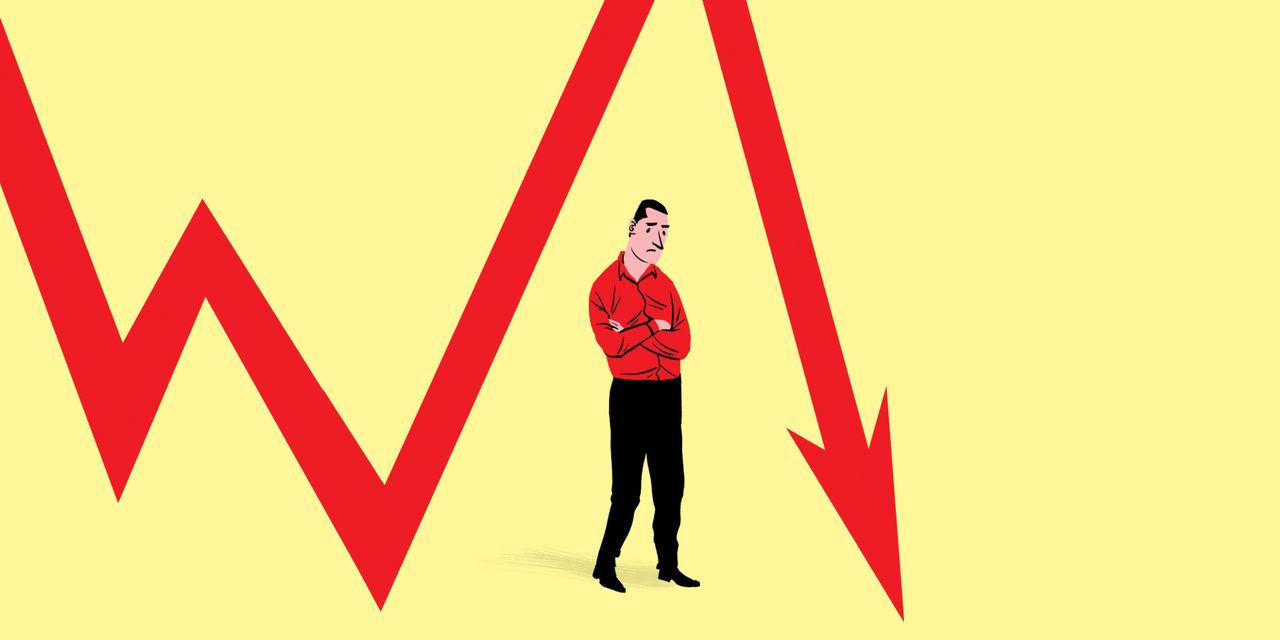
What is Decentralized Application (dApps)?
Decentralised applications, often known as dApps, are open source software programmes that are distributed throughout a peer-to-peer (P2P) blockchain network rather than on a single computer. The decentralised apps are reimagined versions of popularised and constructed on the Ethereum network using smart contracts.
The following requirements must be met for an application to be classified as a dApp, according to blockchain pioneer David Johnston's book "The General Theory of Decentralised Applications, Dapps":
- The application must be entirely open-source, run independently, and have no single entity in possession of the vast majority of its tokens. The application may change its protocol in response to improvements that are suggested and customer feedback, but all modifications must be approved by a majority of the programme's users.
- For access to the application, a cryptographic token (such as Bitcoin or a token native to the system) must be used, and any value contributions from (miners/farmers) should be compensated in the application's tokens.
- Tokens must be created by the application using a common cryptographic algorithm as evidence of the value that nodes are adding to it.
How are Decentralized Applications different from software applications?
An application programme, which is another name for a piece of software, is made to handle particular duties for users. Any programme that processes data on behalf of a user falls under the category of such software since it instructs the computer to carry out directions issued by the user. Examples include word processors, spreadsheets, and payroll software.
The same front-end code that is supported on a website or mobile device for a user is also used by dApps. The back-end code of a dApp, however, is unique and will offer a far wider range of features. As dApps run on a decentralised P2P network, once a developer releases the dApps software, others can build on top of it without being under the jurisdiction of a single entity. A dApp offers a range of business applications, including those for social media platforms, self-executing financial contracts, and multi-user games.
Scope of DApps
Dapps are a brand-new approach to handling personal finances. When it comes to traditional finance, a centralised organisation like banks or other financial organisations frequently controls financial activities including borrowing, lending, and saving money.
But how would financial operations operate in a decentralised environment? especially in light of the widespread belief that cryptocurrencies and the blockchain represent the financial industry's future?
Dapps make it possible to carry out financial tasks in a decentralised setting. These decentralised applications (dApps) are powered by distributed ledger technology and operate on a decentralised network. The user utilises the dApp to process data across distant networks and conduct financial transactions.
DApps are used to
- help safeguard blockchain-based governance and voting.
- Work as browser plugins that are integrated to show advertisements, monitor user behaviour, and collect cryptocurrency donations.
Some industries that employ dApps are
- Financial services
- Supply chain management
- Identity verification
- Real estate
- Healthcare
- Education
- Social media
- and Predictive markets
Advantages and Disadvantages of dApps
Pros:
- They never go offline, are constantly available to serve customers, and lack a single weak point from which bad actors may execute denial-of-service attacks.
- DApps protect user privacy because real-world identity is not required. Without the need for a centralised authority, it employs smart contracts to conduct transactions between two anonymous parties.
- Because no single entity on the blockchain can erase messages, stop transactions, set up dApps, or read data, it is impervious to censorship.
- DApps built on the adaptable Ethereum platform give programmers the foundation to find creative uses for digital apps across a range of sectors.
- Since hackers cannot alter transactions or other data that has already been made public on the blockchain, they offer total data integrity.
Cons:
- They are challenging to maintain because updating code and data that has already been published is challenging. It's challenging for developers to make upgrades, even if defects or security vulnerabilities are found in the versions that have already been distributed.
- Performance overhead makes effective scaling difficult. To obtain the level of security, integrity, transparency, and dependability, nodes execute and store each transaction.
- Putting together the tool stack required to safely connect with the blockchain is challenging for the typical end user. It will be more difficult to design user-friendly experiences as a result. Users aren't getting the support they require because dApps are still in their infancy.
- Slower platform updates and adjustments will also result from a lack of central authority. The acting government will need to agree on dApps, even for a minor bug repair. This might take weeks or months as consumers weigh the benefits and drawbacks of the fix.
- dApps are currently out of reach for non-techies. Users need dApp-compatible browsers, send the necessary cryptocurrency to that wallet, and interact from there; it cannot be downloaded.
Top 5 Most Popular dApps Available Now
1. UNISWAP
Users can swap and exchange ERC-20 tokens using this decentralised technology, which is located in the US and was introduced in November 2018. It is currently one of the biggest cryptocurrency exchanges on the internet, with more than 150k monthly users and an average daily trading volume of $2.5 billion.
2. PANCAKE SWAP
Pancake Swap is an Automated Market Maker that is a component of the Binance Smart Chain (BSC) network, despite the fact that it leverages Uniswap's source code, which was created on the Ethereum blockchain. You can exchange BEP-20 tokens on it. Users can swap, stake, farm, take part in competitions and lotteries, among many other activities.
3. AAVE
This liquidity protocol is open-sourced, giving users total transparency. On this decentralised platform, users can deposit digital assets and lend, borrow, stake, and receive interest on their deposits. Aave's standout features include the ability to execute flash loans in a matter of seconds, take part in policymaking, and cast votes for significant choices using the native token.
4. OPENSEA
OpenSea was introduced in December 2017 and became the first NFT market to attract widespread notice. To save transaction fees, it was first created on the Ethereum network and then incorporated onto the Polygon blockchain. It offers some of the greatest brands in the NFT business, including Bored Ape Yacht Club, Crypto Punks, The Meebits, and more, and has more than 10,000 different NFT projects.
5. RARIBLE
The Ethereum blockchain was used to construct this NFT market, which supports trading NFTs across various chains. Users can trade, mint, and list NFTs using this system. Rarible offers a variety of NFT genres, including 3D art, music, and photography. RARI, the platform's native cryptocurrency, allowing voting and involvement in platform governance.
The Future of Decentralized Applications or dApps
Distributing control or authority is a component of decentralisation. It means the division of power or control over anything, such as a piece of data or any organisational structure. This distribution is made possible by decentralisation because it does not rely on a controlling entity like a central server, computer, major corporation, or government.
DApps have the power to fundamentally alter the way we work, communicate, commute, and much more. This implies that it has the ability to alter the internet, aiding in the fight against internet censorship and boosting public confidence in the system. DApps can employ a peer-to-peer network and decentralisation to transform the commercial landscape.
These apps are intended to further automations and transaction security by being a part of our daily lives, cutting expenses, and removing third parties from many of our personal and professional activities. Decentralised applications are anticipated to continue growing in popularity by several industry enthusiasts.
Federico Ast, the founder of Kleros, reassures that it is normal to criticise blockchain technology. He continues by saying that any criticism of dApps is unfounded and that dApps have a bright future.
New technologies are usually received with skepticism. It’s easy to dismiss a new technology when you compare its very first iteration with the established versions of previous technologies.
Dapps have so many advantages that some people believe they will dominate the internet in the future. These advantages include distributed compute for improved scalability and efficiency, distributed storage for improved security and redundancy, and more.
However, dApps are still in their infancy and are still being developed. Only time will tell how this power will be used once it reaches its zenith and what will transpire. Some even predict that given all the benefits decentralised apps have to offer, they will eventually take the place of some centralised apps.
.png?v=1)


